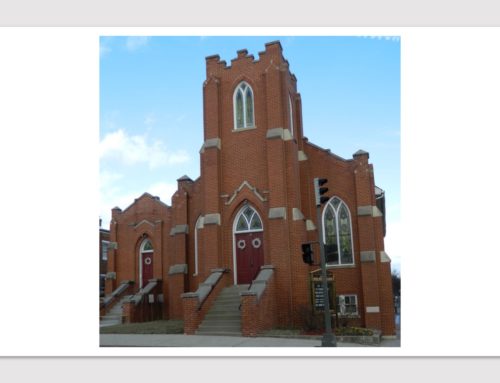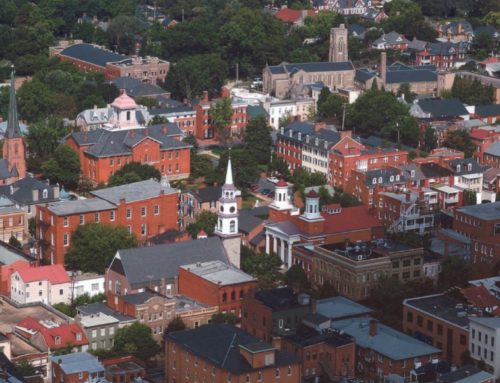Excerpt from the Frederick News-Post:
Marrying flexibility and history, a final design for the former Frederick Railroad building on East Patrick Street is approved and ready for implementation as part of the proposed downtown hotel and conference center.
Members of the city’s Historic Preservation Commission voted unanimously Thursday to approve plans to rehabilitate the early 20th-century building and turn it into a commercial spot. The building is one of the only structures on the 200-212 E. Patrick St. site set to remain standing within the plans for a four-story, 180-room hotel and 20,000-square-foot conference center. The commission spent many hours over the past several months going over the details of the renovation plans with developers Plamondon Hospitality Partners and architects from the two firms working on the project — Peter Fillat Architects and Bates Architects — before landing on the final version approved Thursday.
“We’re excited,” said architect Peter Fillat, the principal of Peter Fillat architects, after Thursday’s vote.
From trolleys and electricity to newspapers and art, the building has a storied history. The developers’ goal was to create a building that preserves that history and provides flexibility that could appeal to a variety of tenants. The developers and architects have said that attracting commercial tenants to a historic building can be a challenge.
The plans include four design options for different numbers of commercial tenants on the ground floor. The second level is designed for residential or office space.
The first, one-tenant option would gut the first level of the building, except for the significant interior structural walls. The second option would fit the ground floor for two tenants, while the third would accommodate three tenants. The fourth option, which Fillat called the most favorable in the last workshop, would turn the first floor of the building into a market.
The renovations approved Thursday include cleaning brick walls, repairing windows, repairing and replacing historic doors, reconstructing stone steps on the corner entrances, installing storefront windows and doors on the east and west sides of the train shed, installing fabric awnings and metal canopies at the first-floor window and door openings, restoring the original trolley car openings and installing metal and glass sectional garage doors, installing and screening a new rooftop HVAC system, and installing light fixtures.
The commissioners approved the majority of the renovation application as is, minus a stipulation to install diagonal supports on the awnings, per Chairman Dan Lawton.
Lawton, who made the motion for approval, said he was concerned about the proposed canopies projecting out and wanted to ensure they are supported. Fillat said after the vote that he had no problem with adding supports to the design.
The approval of the design is the final bureaucratic step in the development of the railroad building. The hotel and conference center, which will both be new buildings, still have approvals to obtain. The proposed structures have already gone through an initial approval to set height and size and will move next to the Planning Commission for site plan approvals. Once those approvals are granted, the plans will go back to the Historic Preservation Commission for design approval.
History of the Frederick
Railroad building
Built in 1910, the building’s first use was an all-in-one terminal, waiting room, ticket office and freight depot to accommodate the trolley line that ran through western Maryland. Potomac Edison Co. was headquartered there, and operated a 17-mile stretch of trolley line from Frederick to Thurmont and sold electricity on the side. While the trolley line fizzled out in the late 1930s, Potomac Edison continued its electricity business at the building until 1967. The following year, The Frederick Post moved its headquarters into the building and remained there — after merging to become The Frederick News-Post in 2000 — until 2008. Since then, the space has been used a pop-up arts venue but today remains primarily vacant as it awaits its planned makeover.



